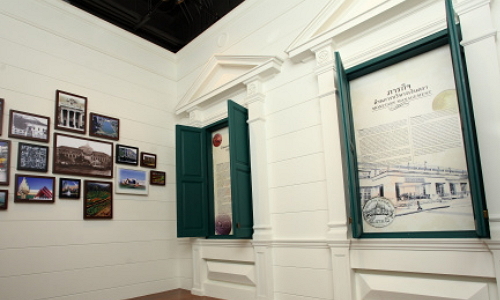
Responsible for the management of national treasure, the Treasury Department was officially established in 1933 under the name Department of Royal Treasury in compliance with the Royal Decree to lay down regulations within the Ministry of Finance following the transfer of power from an the Treasury Department following the Bureaucratic Restructuring Act of 1952.
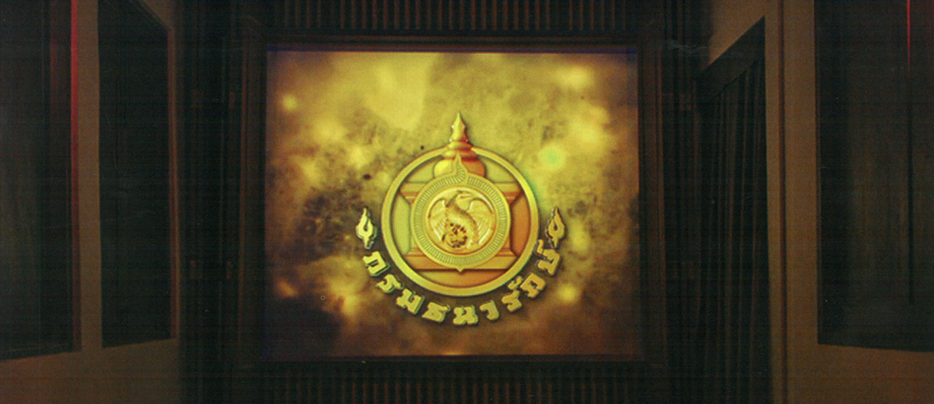
พระคลังมหาสมบัติ
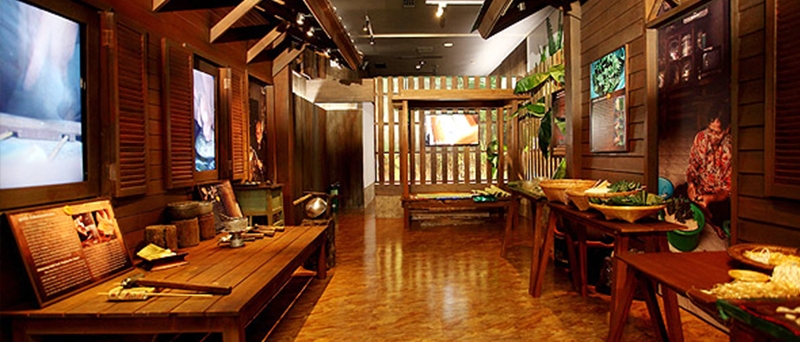
Side by side Thai society, the department has made significant progress more than eight decades of social and economic change ranging from a transition from an absolute to a constitutional monarchy, adjusting as the county was faced with economic crises to assuming a new mandate as a result of bureaucratic reform. Once a department with simple organizational structure, is has now developed into a large organization with rather complicated management system befitting its four-fold major mission covering i) the and distributing coins in circulation to meet demand in the national economic system; ii) the conservation the Grand National Treasures and publicity for national treasury; iii) the property valuation that is on a par with international standards and covers the entire country; and iv) state property management for maximized economic, social and environmental benefits.
The Khurusapha Printing House on Phrasumen Road. Otherwise called Khurusaphu Phrasumen Printing House, was situated on the state property under the auspices of the Treasury Department. Upon the expiry of the lease with the Khurasapha Business Organization in 1995, the department intended to utilize the plot for the benefit of the public and with the local Banglamphu Community’s participation to turn the old structures of the abandoned printing house into the Pipitbanglamphu Museum, a new learning centre to focus on national treasury management – one of the way of historical life of Banglamphu Community.
ธรรมาพิบาลอารักษ์พันธกิจกรมธนารักษ์
The Khurusapha Printing House on Phrasumen Road. Otherwise called Khurusaphu Phrasumen Printing House, was situated on the state property under the auspices of the Treasury Department. Upon the expiry of the lease with the Khurasapha Business Organization in 1995, the department intended to utilize the plot for the benefit of the public and with the local Banglamphu Community’s participation to turn the old structures of the abandoned printing house into the Pipitbanglamphu Museum, a new learning centre to focus on national treasury management – one of the way of historical life of Banglamphu Community.
At the museum, exhibitions focusing on the Treasury Department’s missions aim to inform the public about the department’s historical background as well as respon-sibility as regards management of the state property for added economic and social value with clear-cut regulations and procedures. At the design stage, the space on the second floor of the concrete building was chosen to reflect the department’s status as a strong, secure, modern and professional organization with regard to the implementation of each of its tasks. As such , it hopes to impart to the visitor not only the purpose of his/her visiting the museum but also the gratifying sense of learning and understanding that its mission plays a concrete part in people’s daily life, even constantly renders them assistance. The exhibiton starts with an introduction to the four aspects of its mission in the Royal Treasury Gallery, with a window panel reproduced to reflect the architectural style in the Grand Palace compound so that visitors can have a glimpse of history and be reminded of the department’s long years of existence task Thailand.
เบิกโรงกษาปณ์ ตามรอยเงินตรา
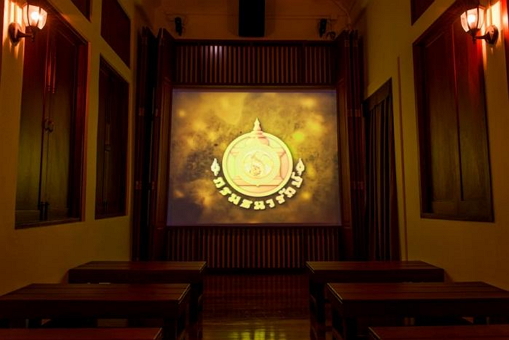
Money has been used in highly civilized countries as a medium of exchange of goods in the context of barter or trade. In ancient times, trade took the form of barter where people exchanged their goods with what they lacked. Later, when each locality became more civilized and could produce a wide variety of goods, including those they previously never have had. bartering goods of similar types proved on longer practical as one locality’s need did not directly meet another’s need or demand. Thus, a medium of exchange such as silk cloth, pearl , shell, shiver and gold emerged today’s money in the forums of coins, banknotes and credit cards.
Modernization of Thai money in keeping with international practice began in 1860 in the reign of king Mongkut, Rama IV. To replace the existing Pod Duang money. The King decreed that international ‘flat’ coins and banknotes be produced for circulation and that a mint, which was named Siddhikarn Royal Mint, be constructed in the grounds of the Grand Palace. For the purpose , of this evolution, Thailand’s first steam-powered minting machinery was later installed. With subsequent to ensure adequate coin production to meet the demand as well to develop the coin safekeeping and distribution systems in anticipation of economic expansions.
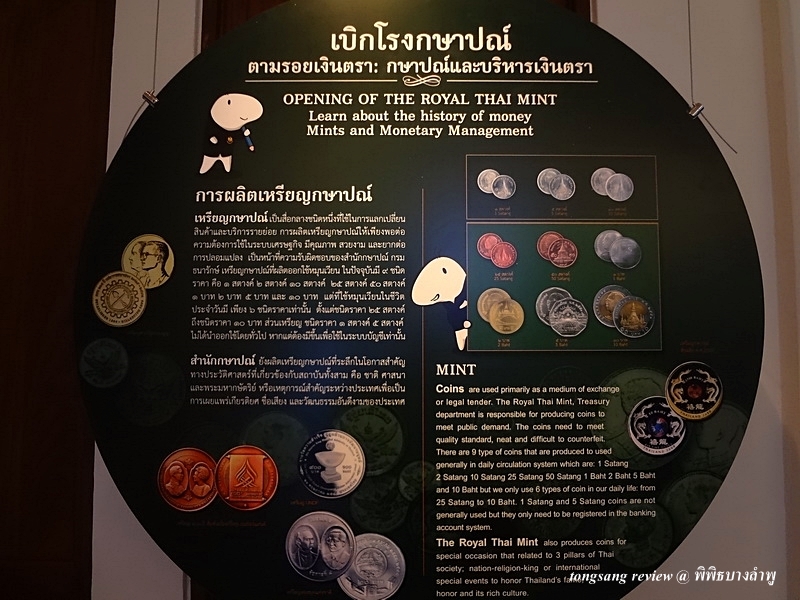
Despite economic growth with greatly modernized variety forms of payment used in buying and selling, coins of the lowest value used as small change still to play an important role in the economic system. As the government agency responsible for the production and distribution of coins, the Treasury Department needs to constantly improve its operations as a specialized office with expertise in minting high quality coins that are both beautiful and difficult to counterfeit as well as in management so that coins are effectively released into the economic system for public convenience in exchanging, buying and selling of goods and service provision as needed. The exhibition on the mission of the Treasury Department therefore presents statistics on the usage of coins along with different demonation. Nowaday coin-operated machines are generally used in our daily life in the Boek Rong Kasap Tam Roi Ngoen Tra (Overture of the Mint – Tracking the Money) Gallery for the public’s better understanding of the importance of coin minting and realization of the enormous number of coins being used at the national level.

Emphasizing and elaborating on the importance opts for the theme of its mint as the base presentation with its member of staff impersonating the mascot and giving a demonstration of the minting for easy understanding . To accentuate the fact that coins are close to humans and even small children know how to use them, the mascot in presented as a cute cartoon character that can relate to visitors of all ages while the staff of the mint t=is presented as a young Vayubhak, a mythical wind-eating bird and emblem of the mint, designed in such a way that children can imagine it as any type of a mythical creature.
Aside from producing coins for public circulation, the Treasury Department also in charge of producing commemorative coins to Mark significant occasions in national history or international events; the royal Thai decorations; commemorative medals; tokens and other made-to-order items; and producing and selling numismatic goods under the mint’s brand name, Its further mission, namely monetary management, under the auspices of the Bureau of Monetary Management involves the distribution and exchanging of coins among the public as well as various offices and agencies. At the regional level, six Coin Management Centres have been set up in the following province: Khon Kaen, Ubon Ratchathani, Chiang Mai, Nakhon Sawan, Surat Thani and Songkhla. The objective is to ensure the most effective coin distribution and management.
เพื่อราษฎร์และที่ราชพัสดุและประเมินราคาอสังหาริมทรัพย์

National treasures comprises the King’s royal utensils and articles as well as those graciously given by the King to members of the royal family, members of the nobility and high-ranking officials.
Made with the state’s fund, national treasures also includes articles such as ornaments, Thai money used in different periods in the past and other miscellaneous articles. The tasks of national treasury maintenance and safekeeping used to be under the auspices of the Department of Collection during the reign of King Chulalongkorn, Rama VI. It later came under the auspices of the Treasury Department, Ministry of Finance. At present, national treasures in under the care of the Bureau of Grand National Treasure.

To ensure that national treasures remain in their perfect, beautiful state at all times, the persons in charge are required to adhere strictly to the preservation principle with their expertise and skill. From the outset, the items must be classified with a list of each individual item which states its history, physical features and defect or nature of damage or decay for reference when it comes to maintenance, storage, monitoring and recording. The procedure is then followed by the preservation process in conservation lab for treatment investigation with technological know-how through a blend of knowledge on ancient artistic craftsmanship and modern technology to ensure the aesthetic property in the original artistic style.
Items of national treasure that have undergone the preservation process are kept in cases or special containers with sizes and shapes made to befit each individual item and made from especial materials containing zero pH value. These are then placed in a strong-room which is equipped with safety and temperature and humidity control systems to safeguard against deterioration or decay as well as ensure their maximized sustainability
In the area of publicity , national treasure items are selected for public exhibition at the Pavilion of Regalia, Royal Decorations and Coins located in the Grand Palace; Treasury Pavilion 1, Chiang Mai Province; and Treasury Pavilion 2, Songkhla Province. The objective is to general public to admire, be informed and take pride in national treasure items which – as Thailand’s cultural heritage – are historically and culturally invaluable. Visitors will also witness the high craftsmanship of ancient Thai
craftsmen who created fine, splendid and elaborate artifacts with distinctively unique features.
In addition, the Treasury Department in 2013 turned the former office building of the Bureau of Monetary Management into the Coin Museum, a learning centre for coin collectors, youths and interested persons where information is provided for the study and research on coins.
It also established the Treasury Department’s Learning Centre together with a community library known as Pipitbanglamphu to disseminate information about its work as well as Banglamphu community culture.
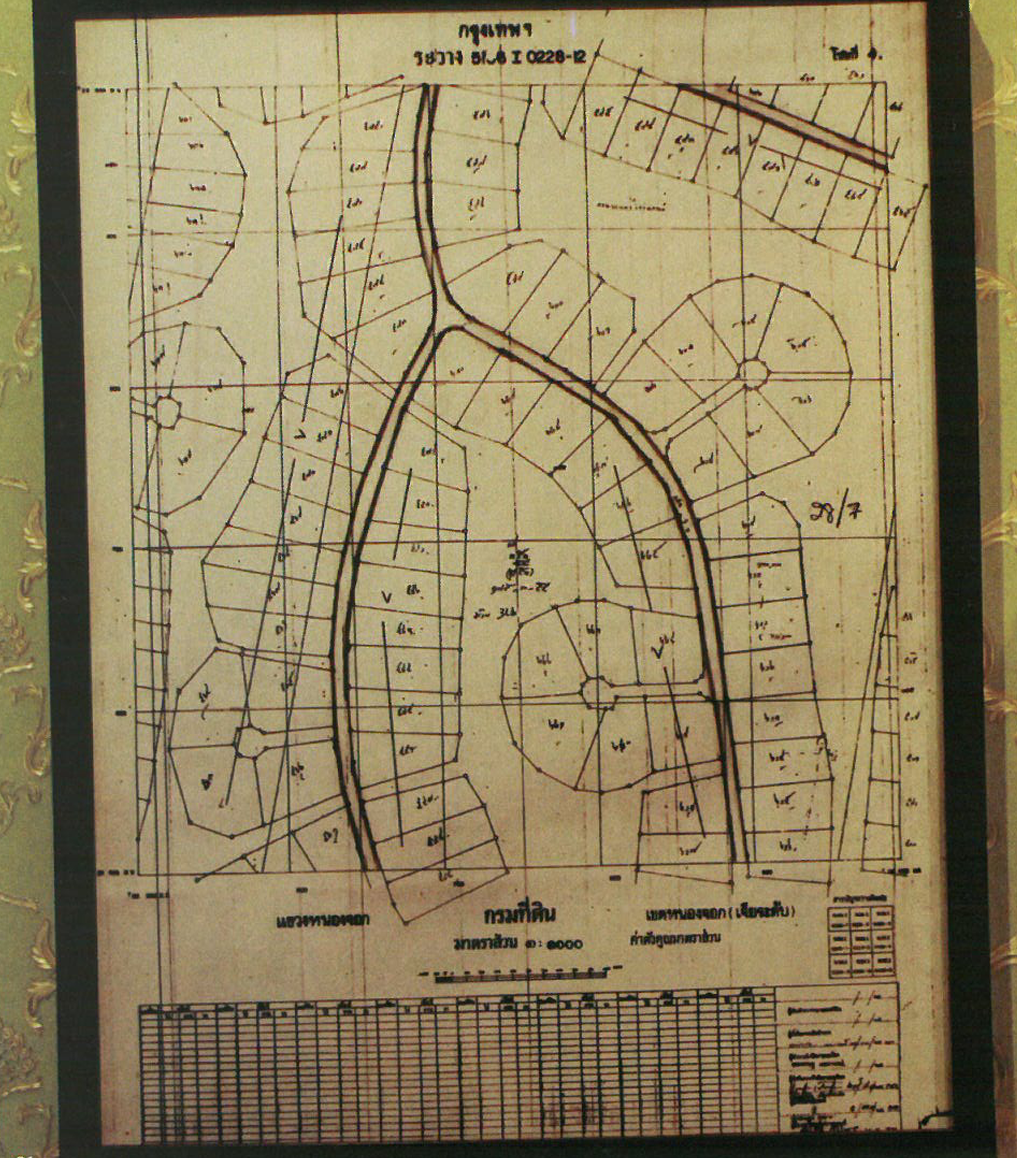
The Bureau of Grand National Treasure has additionally set up an e-Museum website to serve as an on-line guide to the Pavilion of Regalia, Royal Decorations and Coins.
Visitors can thus take a full-scale tour of the pavilion with no space or time restrictions. The website also enables visitor’s continued participation in exhibitions organized both in Thailand and abroad to widely dissemination information about Thailand’s national treasury among the Thai population as well as the world community. These include exhibitions to publicize the national treasury and stimulate a sense of pride of and protectiveness toward the national treasure among children and youths.ร่
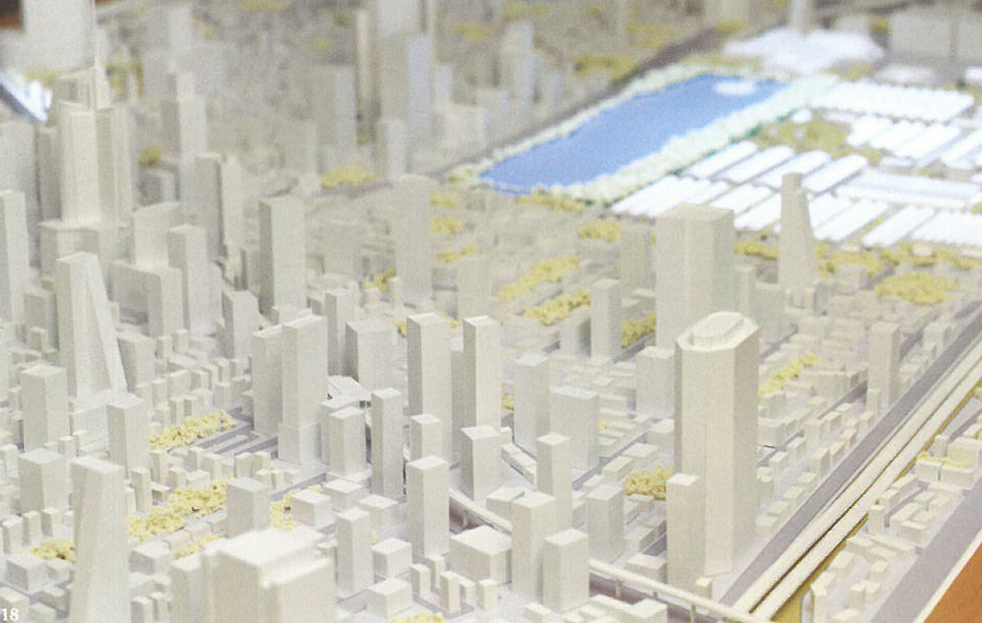
Land is a limited resource that is essential to the people’s livelihood and the production process, Generally, land ownership in Thailand can be divided into three major categories: land owned by the private sector for housing, agriculture and commercial purposes; state land such as forests, reserves, public land and state property: and land owned by other entities such as temples and the Crown Property Bureau.

State Property or Ratchaphatsadu Land has existed since the absolute monarchy era of king Chulalongkorn, Rama V and was defined according to the State Property Act of Rattanakosin Year 109 or B.E. 2434 as ‘land belonging to the state’, Later during the reign of King Vajiravudh (Rama VI), Rama VI consented to the proposal to amass land under the various departments and ministries to be registered and maintained by the Ministry of Finance for better management.
During B.E. 2518 the Ratechaphatsadu Land Act (State Property Act) as every kind of immovable property which is State Property except waste land and land surrendered, abandoned or otherwise reverted to the State according to the land law, immovable property which is in use for the people or reserved for the common use of the people such as foreshores, water-ways, highways and lakes. An immovable property of state enterprise being a juristic person or an immovable property of local government organization shall not be deemed as State Property. In Thailand today, 12.25 million rai of land is State Property.

The Treasury Department is responsible for managing State Property efficiently for maximum benefit both economically and socially. The management of State Property can be categorized as follows:(1) Use of state property for government purposes such as government offices to provide services to the general public. This is the principal use of state property, totaling 99% (2) Lease of state property for commercial purposes (3) Use of state property for public, social and environmental purposes and management of those projects in conjunction with the Ministry of Interior, Ministry of Social Development Institute (CODI) such as developing housing projects for the poor and slum dwellers all for a sustainable and better living standards. (4) Use the state property in support of government projects and policies.น

In addition, the Treasury Department has endeavored to integrate the economic and social development of state property resulting in the Creative Economy Project which gives importance to the cooperation of the public sector with the people or stakeholders of the locality in the development of state property with historic value. The case in point is the Pipitbanglamphu Museum, which was converted from the old Kurusapha Printings House, which in located on Phar sumen Road , Phra Nakhon Distrct, Bangkok. This project has been successful from the beginning due to the community’s full support. The museum main aim is to be the learning center and library providing useful information about the Banglamphu community’s history, local wisdom and identity. It is hoped that this project will become a tourist attraction in the near future.
The Treasury Department would like visitors to the exhibition to better understand the works and missions of the Treasury Department through the ‘Rooms for the Country and People’ This part of the exhibition aims to showcase all the equipments and tools used in the management of state property and also to showcase the transformation of the Asoke District and Klong Ton District since 1954 in relation to its development and property valuation.
Valuation is a common practice in the daily life of the general public but without their being aware of it, for example, when we set the price and bargain for a reasonable price befitting the quality of goods. The person who bargains must therefore be informed of all data concerning the goods in question so as to be able to determine the appropriate value. At the national level, property valuation bears significantly on the overall economic picture while the property owners to achieve cost-effective utilization to their maximized benefits and profitable business operations in the private sector on the one hand and enhance economic, social and environmental development planning in the government sector, both at the local and national levels, on the other. Besides, professional standard does give rise to social fairness as all parties concerned are aware of the appropriate value befitting the respective property and, hence, will not take advantage of others. Thus, all parties concerned will be satisfied as they are treated with fairness.
Official property valuation dates back to the reign of king Chulalongkorn, Rama V, when farming tax was collected based on an estimate of yield per year. The methods of valuation particularly pertaining to lad were subsequently defined in the Revenue Code B.E. 2482 (1939) whereby the medium price of land in each sub-district was fixed for the collection of the local development contribution. This later became the local Development Tax Act B.E. 2508 (1965), the basis for the local development tax collection by local administration offices applying up the present

It is inspected along with land utilization and the overall surroundings, for instance, its accessibility: road condition ; traffic system; and main facilities such as BTS station, market, department store and school. The market price, both buying and selling, is also verified at this stage. Having obtained all the above-mentioned data, the bureau proceeds to conduct an analysis for the valuation. By comparing the plot of land to be valued with other plots that are recently sold. The next process involves the submission of the case to the Valuation Sub-committee for Valuation and the request for appropriate and fairest appraised value. The current Valuation list is force during 2012- 2015 , The new one will take effect from January 1, 2016 onwards,
There are two types of land valuation, namely block based valuation and parcel based valuation.
Block valuation means valuation of land by group along a road or lane.
Block valuation Valuation by a piece of land refers to the valuation of an individual plot of land per square wa (equivalent to for sq m). The type of valuation applies to the following provinces: Bangkok Metropolis, Nonthaburi, Samut Prakan, Nakhon Songkhram,Phuket, Chonburi, Chachoengsao, Chai Nat , Pathum Thani, Phichit , Uthai Thani, Mae Hong Son Bueng Kan and Nakhon Pathom.